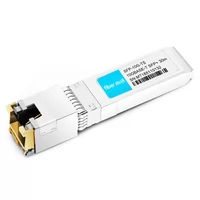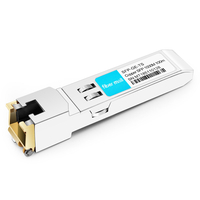Fortinet SFP transceiver modules are crucial factors within the framework of networks, providing flexibility and efficiency in connecting various architectures, more so, where they are easily integrated with the Fortinet systems. These small form-factor pluggable (SFP) modules allow the transmission of data at high speeds across a wide range of media, including copper and fiber optic cables, thus harmonizing and increasing the scale of networks. This guide highlights certain aspects of Fortinet SFP transceiver modules that are not commonly understood; they include their functionalities, applications, technical characteristics, parameters, areas of use, and the purpose of their deployment. This understanding would allow network administrators to quickly identify the main characteristics of the devices and how they can enhance the network performance, security, and availability at its optimal configuration throughout its operations. Join us as we explore the details of Fortinet SFP transceiver modules and how you can make the right choices in your networking plan as a networking professional.
What are Fortinet SFP Modules and How Do They Work?
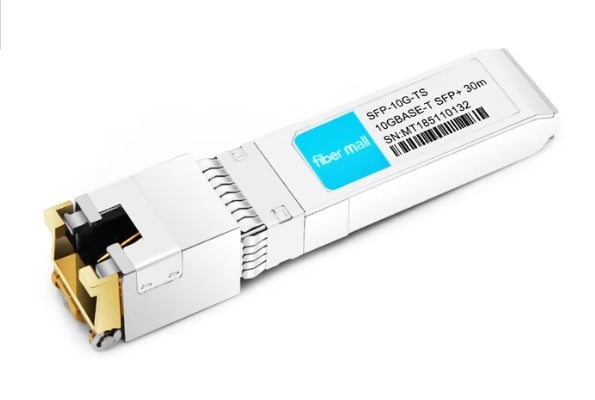
Fortinet SFP modules make it possible to connect high-speed data circuits and are integrated with various networking devices in the form of compact, hot-swappable transceivers. These modules work on the outgoing principle of transmission by converting an outgoing electrical signal into an outgoing optical signal and the opposite for incoming signals, which enables communication using fiber optic or copper cables. The Fortinet SFP modules are designed to be compatible with various network equipment that work on different protocols and data rates of up to 10 Gbps. They find use in switches, routers, and other network equipment for greater efficiency and versatility, allowing networks to be tailored to specific needs and handling a wide range of networks. It is essential to understand the working principle and the process of integrating these modules into the circuits to ensure efficient and optimized network performance and transfer of information.
Understanding the Basics of Fortinet SFP Transceivers
Fortinet SFP transceivers serve as a modular connectivity device to an extensive network. The operating data rates on these transceivers vary from 100 Mbps to 10 Gbps to suit different networking requirements. Their design supports easy installation and changing parts without shutting down the entire network, a practice called hot-swapping. This is a crucial feature to ensure network reliability. Furthermore, Fortinet SFP transceivers are designed to work with single-mode and multi-mode fibers and can be used in multiple network setups. Network operators can select and install the suitable SFP module and optimize and scale their networks to grow bandwidth availability and increase data throughput.
How Do Fortinet SFP Modules Enhance Network Efficiency?
Fortinet SFP modules are essential connectivity products whose importance is emphasized in providing high-speed data transfer and scalability of the network architecture. These SFPs are easily integrated with current systems and can be fitted without causing interruptions to the system because they are hot-swappable. Because of their integration with various networking devices and protocols, Fortinet SFP modules permit administrators to distribute data across multiple paths, resulting in shorter response times from the network. Furthermore, their support for single-mode and multi-mode fiber further enhances the flexibility of networks supporting different distances and bandwidths, increasing the entire system’s performance and reliability.
What is the Role of an Optical Transceiver in Networking?
An optical transceiver is a key part of the optical network. It also allows for the conversion of electrical signals into optical ones and the other way around. This conversion is crucial for fast data transmission through fiber optics, which is necessary for long-range communication with minimal attenuation. Through the various data rates, wavelengths, and fiber types they support, optical transceivers increase network flexibility and scalability, ensuring that different network components are interoperable. Thus, They are an integral part of the communication infrastructure and provide efficient communication in today’s networks.
How to Choose the Right Fortinet Compatible SFP Modules?
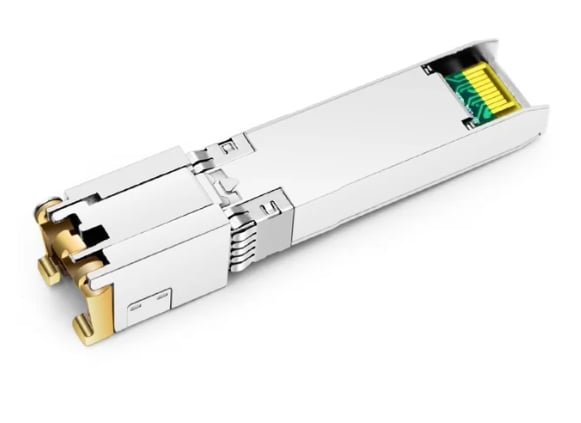
Factors to Consider: Data Rate, Compatibility, and More
When looking for Fortinet-compatible SFP modules, several technical points are worth evaluating to ensure the compatibility and efficiency of your network structure. Look first at the data rate requirements, which the network’s bandwidth should influence. The starting point could be looking for Fortinet SFP modules that support data rates starting from 100 MB to 10 GB, which are ideal for you as they will suffice your current devices and the future.
Another critical factor is interoperability since the selected SFP module should meet the requirements of your installed systems and the Fortinet appliances you are currently deploying. This involves confirming the support for the suitable connectors, the wavelength parameters of the module, and those of the fiber optic cables.
In addition, transport distance should also be factored in, together with the fact that your network’s configuration demands either single-mode or multi-mode fiber modules. Long-distance communication will always be better with single-mode fibers; shorter-range communications, on the other hand, should use multi-mode fibers, especially in the same building or facility.
In addition to the above, look at the SFP module vendor’s history and evaluate whether the supplier is trustworthy, has attractive spans, and offers good after-sales service. Reading user feedback and their experiences can also be important so that you select a reliable product that would suit your network’s requirements.
Exploring Different Types of SFP Modules for Various Network Devices
Considering the different types of SFP Modules suitable for other network devices, it is essential to comprehend how the modules perform and transfer across various systems. Schematic representation provided by its leading sources indicates module types as per gross data transfer rates. The most popular SFP rates are 1G SFP, 10G SFP+, 25G SFP28, 40G QSFP+, and 100G QSFP28. The only thing that varies across the two models is their applicability to different bandwidth requirements as new models come to the market to cater to higher data transfer.
This type of module can also be used to extend the size of the connection, but it states explicitly whether it is for single-mode or multi-mode connection. The most popular SFP standards include wavelength, temperature range, and case size, to mention only a few. Brand names and the kind of connectors – for instance, LC duplex connectors – are equally critical. Maximum benefits can be accrued: reliable communication, enhanced device performance across networks, and the longevity of the network structure by ensuring correct specifications and compatibility.
Customer Reviews: Insights on Fortinet FN-TRAN-SFP+SR and FN-TRAN-SX
From a customer standpoint, the FN-TRAN-SFP+SR and FN-TRAN-SX from Fortinet are regarded highly due to their exceptional operations and dependability in the business network settings. Consumers tend to emphasize its compatibility with the Fortinet devices, enhancing the network’s effectiveness and stability. Indeed, the FN-TRAN-SFP+SR is widely recognized for its wide usage in low-range applications, and so it is appropriate in data centers with high concentrations of low-range connectivity requirements. More than that, the FN-TRAN-SX is cited as a multi-mode fiber diverse with a bit longer distance. Moreover, the reviewer’s comments on both models commend the simple approach to their installation, owing to the straightforward plug-and-play installations and punctuality of customer service provided by Fortinet, which augments the entire customer satisfaction.
What is the Fortinet FN-TRAN-SFP+SR 10GBASE-SR Module?
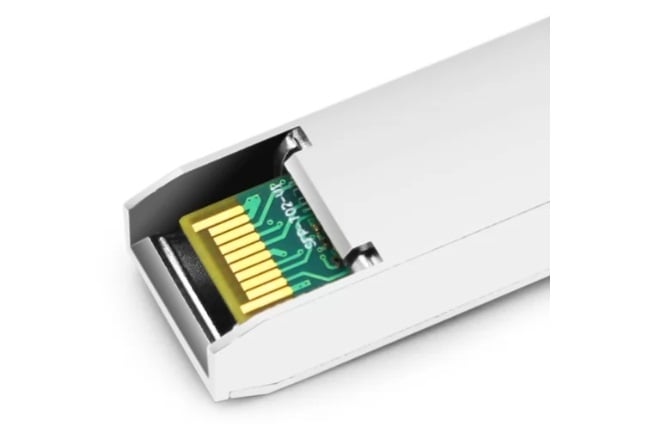
Understanding the Specifications: 850nm 300m DOM MMF Optical Transceiver
The FN-TRAN-SFP+SR, which is a type of module, is made by Fortinet. This module is practical and versatile for short-distance transmission of data. It operates over a distance of 300 meters using 850 multimode fibers. Such transmission is made possible because DOM can power the module. The meaning of such capability means that the voltage that is being used can be monitored in real-time. Such information is vital since it helps the network administrators to manage the network even before it is completely exposed to damage. Based on what the data reveals, engineers have less downtime and enhanced & efficiency. This is possible because of the small size of the module and its hot-swappable form factor.
Compatibility: How the FN-TRAN-SFP+SR Works with Fortinet Network Equipment
The FN-TRAN-SFP+SR module provides compatibility only with the Fortinet network devices and, as a result, allows the devices to transfer data efficiently and reliably in high-density settings. The module integrates directly into Fortinet switching, security, and firewall systems, thus allowing the network to be connected seamlessly at a high speed without extensive configuration. The module supports a plug-and-play approach and does not call for additional software or even drivers, cutting on time spent in setup and the complexity of maintenance tasks. Not only that, but the Fortinet product line is wide enough to provide options for deployment in various types of networks, thus further boosting the variety and scalability of Fortinet network solutions. This assures improved performance and effective management of networks, especially those in data centers or businesses with several compatible modules that provide better interconnectivity.
Installation Tips for FN-TRAN-SFP+SR in a Data Center
The most constant norm of security and protection should be upheld when installing or utilizing the FN-TRAN-SFP+SR module in the data center. Ensure the module and the corresponding equipment are powered off before installation to avoid electrical damage. With the power off, take the necessary steps to plug the module into the SFP+ port while also ensuring that the module fits in between the port guide rails. Once secured in position, power on the network device and the FN-TRAN-SFP+SR module to ensure both systems initialize. Having suitable tools to begin to clean the fiber connectors is highly recommended to help maintain a high standard of quality transmission. It is critical to note that the temperature around the module should satisfy the restrictions given by the manufacturer to avoid overheating of the devices and maintain a steady and smooth performance, particularly for the Fortinet FN-TRAN-SFP+SR. These protocols would indeed be beneficial in promoting and establishing a consistent level of network activity within the data center environment.
Are Fortinet SFP Modules Compatible with Other Network Devices?
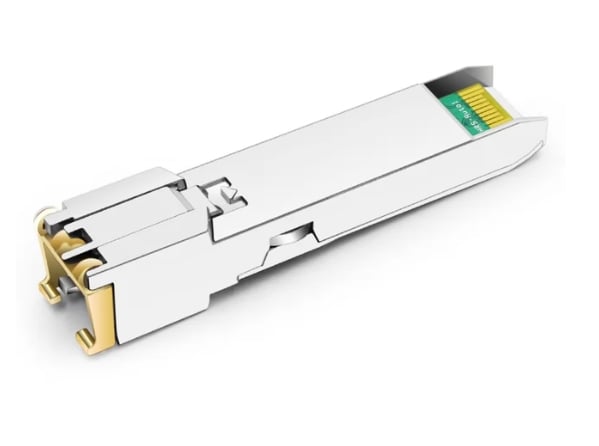
Assessing Compatibility with Cisco and Other Network Brands
The network device brand interoperability should be evaluated along with the device’s technical specifications, especially when assessing the compatibility criterion of the Fortinet SFP modules, such as the FN-TRAN-SFP+SR, with other brands, such as Cisco. According to several trusted sources, Cisco allows third-party SFP modules, such as FN-TRAN-SFP+SR, in its systems only if they adhere to the minimum required IEEE standards. However, it should be noted that such use of components not certified by Cisco may render a system non-compliant or unsupported by Cisco, so availing a competent module should be emphasized. Furthermore, checking for other updates or patches allowing third-party modules can enhance such interoperability between modules. Hence, even though Fortinet SFP modules would seemingly work with several devices, including Cisco routers and switches, extraordinary care for technical support conditions and compatibility seems essential for reliable use within a specified network.
Using Fortinet SFP Modules in Different Networking Setups
To correctly deploy Fortinet SFP modules across various networking scenarios, the first thing to focus on is their role in the enterprise, data center, and service provider environments. As claimed by some of the most prominent sources throughout the web, these are adaptive and can be layered into infrastructure as long as standard protocols are respected. Fortinet SFP modules are easily deployed on enterprise network switches, routers, and firewalls, facilitating network traffic and its management tasks. In data centers, their presence makes it possible to carry out robust data transferring from one server rack or a storage area network to the other. Regarding service providers, Fortinet modules allow for the diversification of network connections with sufficient bandwidth, improving network scalability. However, such estimates should be supported by facts, as to realize the full potential these modules come with, one should check the equipment installed earlier and the vendor’s configuration.
LC Connectors: Ensuring Proper Fit with Multimode Fiber
LC connectors are of the utmost importance when it comes to multi-mode fiber optics, and to achieve such a connection, some technical aspects need to be taken care of. For example, according to some online resources, including one from Corning, LC duplex connectors have low insertion loss and high-performance repeatability; hence, they are made for high performance. Also, other factors, such as the ferrule of the LC duplex connectors, must be considered; it must align at the center of the fiber to maximize light transmission. The latest research shows that inadequate cleaning and inspecting of the connectors allows contamination, which destroys the connector’s performance. Moreover, Using standard colors for OM fiber types reduces the connector type ranging effect, which is necessary for the compatibility and interfacing of the connectors, which affects the overall performance and efficiency of the system.
What to Know About Fortinet FN-TRAN-SX Modules?
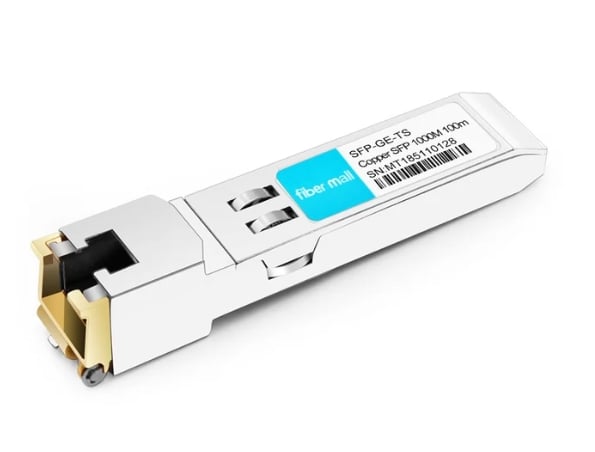
Key Features of the FN-TRAN-SX Module and Its Applications
The Fortinet FN-TRAN-SX SFP (Small Form-factor Pluggable) module offers affordable and effective network solutions for data center and enterprise networks, especially with compatible multi-mode fiber (MMF) optical transceiver modules. One of the module’s highlights is its multimode fiber support with the Maximum data transmission capability of Gigabit Ethernet operating at a wavelength of 850 nm. The module adheres to the IEEE 802.3z standards and can function with various networking devices. Link lengths of this fiber extend to 550 meters, making it ideal for short-range communication for quite congested networks. The FN-TRAN-SX module also comes in small sizes, allowing easy installation into the networking equipment for enhanced maintenance and successful scaling. Using the FN-TRAN-SX is valid in high-bandwidth demand scenarios where there is a demand for efficient and stable connectivity in enterprise and data center LANs. In addition to the above-listed attributes, the FN-TRAN-SX module is beneficial in increasing the network’s performance in terms of speed, reliability, and implementation convenience.
How FN-TRAN-SX Modules Compare to Other SFP Modules
In my opinion, FN-TRAN-SX is often more visible than other SFP modules as it is compliant with IEEE 802.3z and has an 850 nm wavelength design suitable for Gigabit Ethernet over multi-mode fiber. This makes it unique in terms of flexibility and interoperability with different network equipment types. For that reason, its small size design enables it to be more accessible for growing and servicing networks even though other SFP modules support other wavelengths or other distance ranges. Its relatively low cost, in combination with durability, allows usage in short distances up to 550 meters, making FN-TRAN-SX a robust solution for high-concentration networks such as data centers and enterprise LANs. However, some other SFP modules may be able to support longer distances but at an increased price or lower effectiveness for certain applications. However, some may have efficient specific applications that require longer distances but usually at higher prices.
Customer Experiences with Fortinet FN-TRAN-SX: A Review
As for the experience with the Fortinet FN-TRAN-SX module, customers may affirm and confirm that some key positives are consistently highlighted in reviews on major technology forums and retailer sites. In particular, the users recommend the module for its outstanding ability to data throughput and, more so, its smooth performance and incorporation into an organization’s existing networks. Moreover, many such reviews discuss the economic advantages of the FN-TRAN-SX in particular applications, such as its ability to perform to expectations without expensive pricing. Other reports on the implementation of the XT-ACC-1 add that professional IT users are satisfied because the module integrates well with different network devices, enhancing the application’s effectiveness in high-availability and low-maintenance environments.
Reference Sources
Frequently Asked Questions (FAQs)
Q: What is an optical transceiver module?
A: This module is called an Optical Transceiver module. It can transmit and receive signals across a fiber optic cable, enabling high-speed data communication in network systems with Fortinet equipment.
Q: How does the Transceiver module work with a Fortinet device?
A: The Transceiver module works very quickly with Fortinet devices. A transceiver module is a plug compatible with Fortinet hardware. This means that electrical signals are converted into optical signals for transmission across the fiber optic network and back to electrical signals at the Fortinet device.
Q: What is the role of 850nm 550m transceiver in Fortinet products?
A: The 850nm 550m transceiver, sometimes known as a 1000Base-SX SFP connector, is suitable for use with multimode fiber facilities. It supports a maximum transmission distance of 550m or less.
Q: How would you explain the module Fortinet FN-TRAN-SFP+SR?
A: FN-TRAN-SFP+SR FORTINET is an SFP optical transceiver, mainly 10G, with a reach of multimode fibers. Thus, the device can be used in other networking systems Fortinet provides.
Q: When a transceiver is said to be Fortinet FN-TRAN-SFP+SR compatible, what does that imply about the device?
A: A description of Fortinet FN-TRAN-SFP+SR compatible declaratively implies that the device is a transceiver specially made to smoothly work with Fortinet FN-TRAN-SFP+SR modules without any hassles in terms of connectivity, overall performance, and functionality of the units connected to the Fortinet devices.
Q: How can gigabit ethernet be applied or implemented in transceiver modules?
A: Gigabit ethernet is a standard of communication between devices on the network that progresses the design of some transceiver modules to 1 Gbps. This means that the devices within a network that employs Fortinet products can transfer data at 1 Gbps.
Q: How do form factors influence the optical transceiver modules used in devices Fortinet produces?
A: The form factor, such as mini-GBIC or SFP, specifies the form for the optical transceiver module to ensure proper mating and functioning when installed in a Fortinet device.
Q: What is the relevance of compliance regarding the transceiver modules?
A: Adherence to the MSA for overlooking any interference between the modules for the transceivers so that these modules can work effectively with many equipment, specifically Fortinet’s hardware devices.
Q: What is the benefit of using fibers rated OM3 or OM4 in an application with various Fortinet transceiver modules?
A: OM3 and OM4 fibers refer to end-users configured with higher-speed links and thus able to transmit data through more extraordinary lengths, which optimizes the use of Fortinet transceiver modules, especially the SFP modules that are compatible with Fortinet FN-TRAN-SFP+SR modules.
Q: What information can be gotten from the transceiver module datasheet?
A: The transceiver module datasheet contains comprehensive specifications, including performance metrics, compatibility, range, working wavelength, and ranges, which help users select the appropriate module for their Fortinet device.

